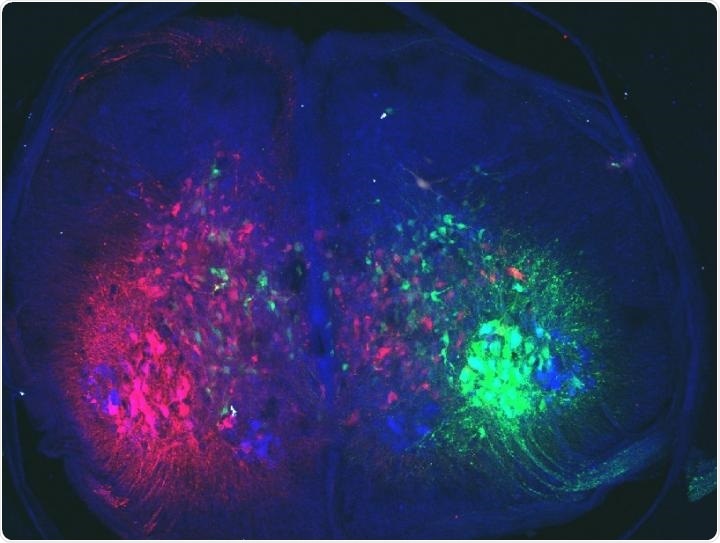Jun 15 2021
For many years, researchers, adventure-seekers, and aeronautical designers have attempted to simulate the characteristics that enable birds to fly, particularly balance and wing structure.

Neuronal network at wing level of the spinal cord of a chicken embryo. Image Credit: Baruch Haimson.
Humans, however, have remained earth-bound in the absence of an external device, like an airplane or hot air balloon, and are unable to utilize their own bodies to push themselves into the stratosphere.
While scientists have historically focused on structural factors, such as wings, that describe the category of birds, a recent research work published in the Science Advances journal by Professor Avihu Klar from the Hebrew University of Jerusalem's Faculty of Medicine and Professor Claudio Mello of Oregon Health and Science University discovered that there are certain molecular traits that separate birds from animals and that these distinctions enable birds to flap their wings and soar to the sky.
Scientists have previously discovered that the capacity of reptiles and mammals to walk is embedded inside their spinal cords. But in the new study, the researchers showed that the capacity to fly is incorporated in the spinal cords of birds.
The researchers closely studied the neural networks of chicken and mouse embryos and determined that the genetic coding of the ephrin-B3 protein in birds differs significantly from that of reptiles and mammals.
The molecule ephrin-B3 is present in mammals but mutated or absent in birds. This simple but profound difference is what allows birds to flap their wings and take flight.”
Avihu Klar, Professor, Faculty of Medicine, Hebrew University of Jerusalem
Animals, like rodents, exhibit this molecule in its fullest form and, as a result, walk in a stepping motion from left to right with their front and rear limbs. By contrast, mice with an ephrin-B3 mutation move with a synchronized jumping action of both right and left sides simultaneously just like birds.
These results bolstered the researchers’ concept that evolution—that is, genetic changes through time—aided birds in developing a network of neurons that trigger a highly coordinated movement pattern, specifically, the simultaneous flapping of wings.
Our study provides a clue to the evolutionary enigma: How did the nervous system evolve to support stepping, flying and swimming. It paves the way for future experiments to reveal the evolution of neuronal networks that enable the different modes of movement of legs and hands, a characteristic of bipedal animals, such as birds and human.”
Avihu Klar, Professor, Faculty of Medicine, Hebrew University of Jerusalem
Journal reference:
Haimson B, Meir O, Sudakevitz-Merzbach R, Elberg G, Friedrich S, Lovell PV, Paixão S, Klein R, Mello CV, Klar A. Natural loss of function of ephrin-B3 shapes spinal flight circuitry in birds. Sci Adv. 2021 Jun 11;7(24):eabg5968. doi: 10.1126/sciadv.abg5968. PMID: 34117069.